Beneath the rippling waters of Earth’s ancient oceans, a remarkable reptilian dynasty once reigned supreme. The Plesiosaurus and its relatives dominated the marine realm for over 135 million years, evolving into some of the most specialized aquatic predators our planet has ever witnessed. With their distinctive body plan—featuring elongated necks, compact bodies, and powerful flipper-like limbs—these mesmerizing creatures represented a pinnacle of evolutionary adaptation to aquatic life. Their fossils continue to captivate our imagination, offering glimpses into a prehistoric world where these elegant hunters patrolled Mesozoic seas. This article explores how these extraordinary marine reptiles rose to prominence, adapted to their watery domain, and established themselves as apex predators in prehistoric oceans worldwide.
Origins and Evolutionary Emergence
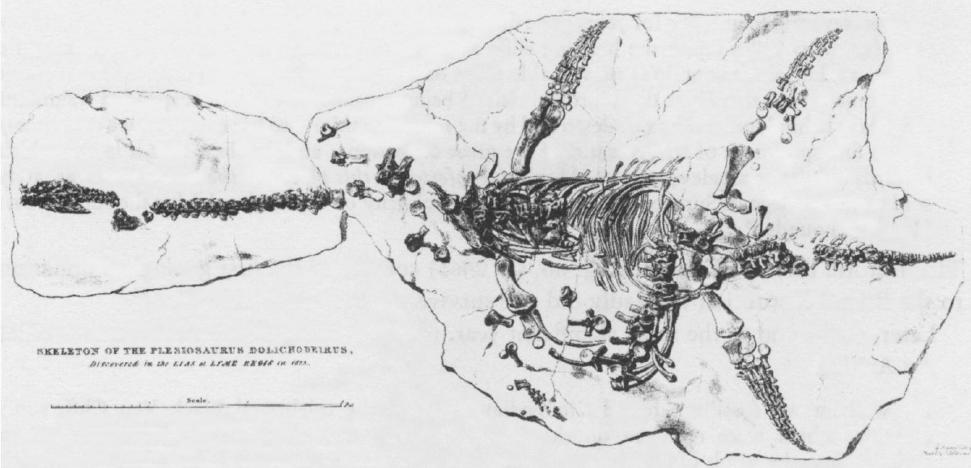
Plesiosaurs first appeared during the Late Triassic period, approximately 205 million years ago, evolving from terrestrial reptiles that gradually adapted to life in water. Their ancestors were part of the Sauropterygia, a broader group of marine reptiles that began their transition to aquatic environments much earlier. The earliest plesiosaurs already displayed their characteristic four-flipper body design, though not as refined as their later descendants. Fossil evidence from England, Germany, and China reveals a gradual transition as these creatures developed increasingly specialized aquatic adaptations. Unlike their distant cousins, the dinosaurs, which dominated land environments, plesiosaurs committed entirely to marine life, with evolutionary modifications that rendered them incapable of returning to land except perhaps briefly to lay eggs, though many paleontologists believe they gave live birth like modern sea snakes and marine mammals.
The Distinctive Plesiosaur Body Plan

The plesiosaur’s body represented one of nature’s most remarkable engineering feats, with a design unlike any living creature today. Their most striking feature was the extreme neck elongation found in many species, with some possessing over 70 vertebrae (compared to just seven in most mammals). This anatomical marvel was paired with a relatively compact, streamlined body and a short tail, creating a silhouette instantly recognizable in the fossil record. Most distinctive were their four large, wing-like flippers that provided powerful propulsion through a unique underwater “flying” motion rather than the side-to-side movement seen in fish and most marine reptiles. Their skull was relatively small but equipped with sharp, conical teeth perfect for grasping slippery prey. This remarkable body configuration—effectively a turtle-like body with the neck of a snake and the flippers of a sea turtle—proved extraordinarily successful, remaining relatively unchanged through millions of years of evolution.
Diversity of the Plesiosaur Dynasty

Though “Plesiosaurus” refers to a specific genus, it has become a colloquial term for the entire order Plesiosauria, which comprises a stunning diversity of species. Paleontologists divide plesiosaurs into two main groups: the long-necked, small-headed “plesiosauromorphs” and the short-necked, large-headed “pliosauromorphs.” These two body types represented different ecological strategies within the same evolutionary group. The plesiosauromorphs included iconic genera like Elasmosaurus, with its extraordinary neck containing up to 72 vertebrae, while pliosauromorphs included massive predators like Liopleurodon and Kronosaurus, with enormous skulls exceeding 2 meters in length. At their peak diversity during the Jurassic and Cretaceous periods, dozens of plesiosaur species coexisted in the world’s oceans, ranging from relatively small 3-meter forms to giants exceeding 15 meters in length. This remarkable diversity allowed plesiosaurs to occupy numerous ecological niches within marine ecosystems.
Swimming Mechanics and Locomotion
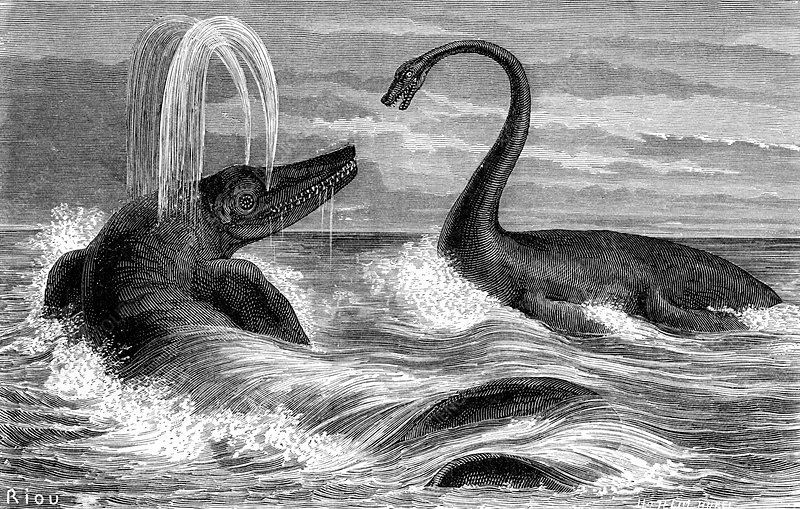
Perhaps the most revolutionary aspect of plesiosaur biology was their unique swimming method, which has fascinated paleontologists for generations. Unlike fish and ichthyosaurs that propelled themselves with side-to-side tail movements, plesiosaurs developed a fundamentally different approach to marine locomotion. They employed their four large, paddle-shaped flippers in a motion similar to birds flying through the air, effectively “flying” underwater. Computer modeling and fossil evidence suggest they used synchronized or alternating strokes of their powerful limbs to generate thrust, with their stiff bodies remaining relatively stable during swimming. This unique form of quadrupedal underwater locomotion has no exact modern equivalent, though sea turtles and penguins employ somewhat similar mechanics. Experimental studies indicate this swimming style provided excellent maneuverability and the ability to hover in place—critical advantages for their hunting strategies. Their neural architecture and shoulder/hip anatomy show specialized adaptations for this distinctive swimming technique that proved remarkably effective for over 135 million years.
Feeding Strategies and Ecological Niches

The dramatic variation in plesiosaur neck length and skull size reflects their diverse feeding strategies and ecological specializations. Long-necked forms likely employed their flexible necks to stealthily approach prey from below or to reach into crevices and vegetation to extract hidden prey items. Their relatively small heads and slender teeth were ideal for capturing small, agile fish and squid. In contrast, short-necked pliosauromorphs evolved as apex predators with massive jaws and robust teeth capable of tackling large prey, including other marine reptiles, giant fish, and possibly even smaller plesiosaurs. Some species developed specialized dentition suggesting shellfish consumption, while others show adaptations for filter feeding. Stomach contents preserved in exceptional fossils reveal fish scales, cephalopod hooks, and even small stones that may have functioned as gastroliths to aid digestion or balance. This diversity of feeding strategies allowed different plesiosaur species to partition resources within the same marine ecosystems, minimizing direct competition and enabling their long-term evolutionary success.
Sensory Capabilities and Intelligence
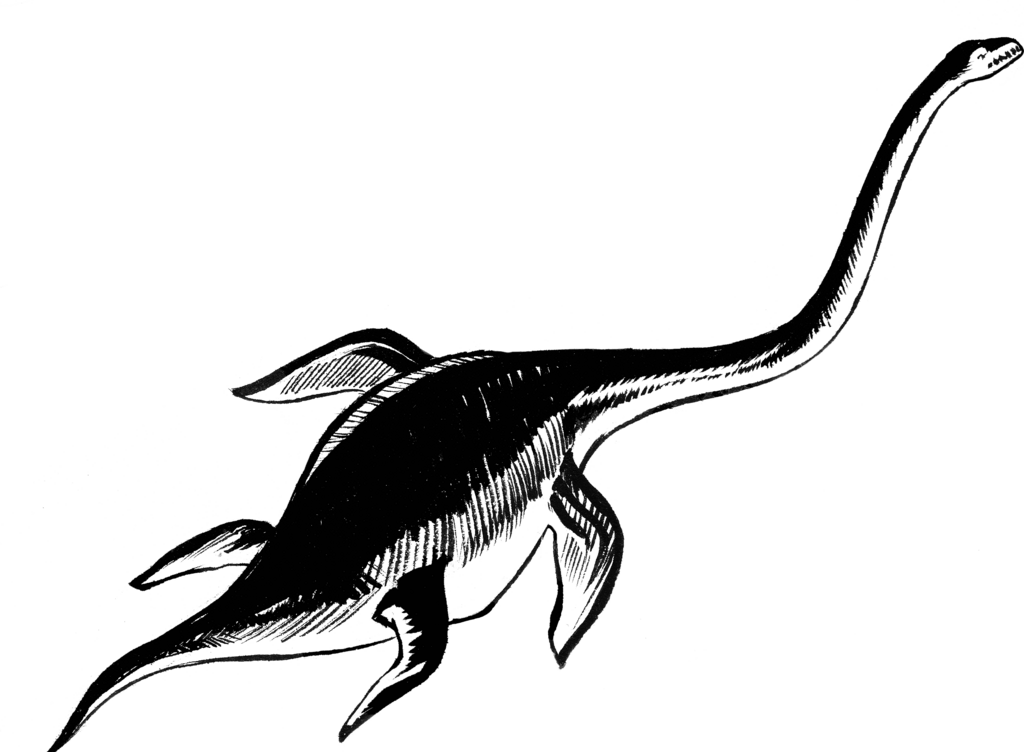
Plesiosaurs possessed sophisticated sensory systems that helped them navigate and hunt effectively in their underwater realm. Endocasts of their brains reveal enlarged optic lobes, suggesting vision was important for hunting, while their ear structure indicates they had good underwater hearing capabilities. Some species had specialized pressure-sensitive organs around their snouts similar to those seen in crocodilians, which may have helped detect prey movements in murky water or low visibility conditions. Interestingly, plesiosaurs had relatively large brain sizes compared to many other reptiles of their era, hinting at potentially complex behaviors and good spatial awareness. Recent research suggests they may have used their long necks not just for feeding but as sensory probes to detect water vibrations from potential prey or predators. Their neural anatomy indicates they likely had the processing power for complex hunting strategies and possibly even social behaviors, though the latter remains speculative without direct behavioral evidence.
Reproduction and Life History
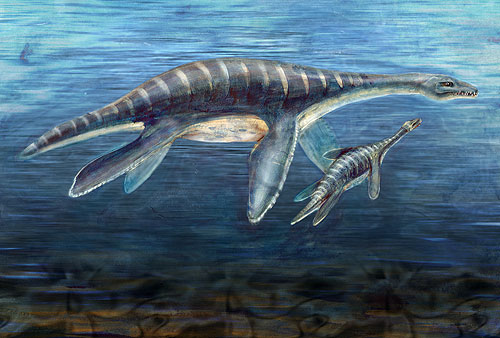
One of the most fascinating aspects of plesiosaur biology is their reproductive strategy, which has been clarified by remarkable fossil discoveries. In 2011, scientists described a specimen of Polycotylus latippinus containing a large, developed embryo within its body cavity—the first definitive evidence that plesiosaurs gave live birth rather than returning to land to lay eggs. This discovery confirmed that plesiosaurs had evolved true viviparity (live birth), similar to modern marine mammals but unlike most reptiles. Their reproductive approach represented a significant evolutionary advantage, eliminating the vulnerable egg-laying stage and allowing them to remain fully adapted to aquatic life. Growth ring analysis in plesiosaur bones suggests they grew relatively slowly but continuously throughout life, potentially living for several decades. Juvenile specimens indicate young plesiosaurs were miniature versions of adults, already equipped with the proportions and adaptations needed for marine life, suggesting they were likely precocial and capable of swimming and possibly hunting shortly after birth.
Global Distribution and Habitat Preferences

The plesiosaur conquest of Earth’s oceans was truly global in scale, with fossils discovered on every continent, including Antarctica. This worldwide distribution demonstrates their remarkable evolutionary success and adaptability to diverse marine environments. During the Mesozoic Era, plesiosaurs inhabited nearly every marine ecosystem, from shallow coastal waters and inland seas to deep oceanic environments. Different species showed distinct habitat preferences, with some specializing in nearshore environments while others ventured into open ocean habitats. Environmental analysis of the rock formations containing plesiosaur fossils reveals they thrived in both tropical and temperate waters, suggesting they may have had mechanisms for temperature regulation despite being reptiles. Their global presence was facilitated by marine corridors between continents, which were positioned differently than today due to continental drift. The ability of plesiosaurs to adapt to such diverse marine environments across the planet was a key factor in their long-term evolutionary success.
Competitors and Predators in Mesozoic Seas

Plesiosaurs shared Mesozoic oceans with a remarkable diversity of other marine reptiles and large predatory fish, creating complex ecological relationships of competition and predation. Their primary competitors included ichthyosaurs—dolphin-like marine reptiles with superior speed but different feeding strategies—and mosasaurs, which emerged later in the Cretaceous as powerful marine lizards with shark-like feeding habits. Giant sea turtles, early marine crocodilians, and large predatory fish like Xiphactinus also competed for marine resources. The largest pliosaurs like Kronosaurus and Pliosaurus likely occupied the apex predator niche, feared even by other marine reptiles, while smaller plesiosaurs faced predation pressure from these larger relatives and other apex predators. This competitive landscape drove evolutionary adaptations and specializations, with different plesiosaur lineages developing distinct ecological niches to reduce direct competition. Evidence of bite marks on plesiosaur fossils and healed injuries demonstrates they lived in dangerous waters where predator-prey interactions shaped their behavior and distribution patterns.
Major Discoveries and Famous Specimens
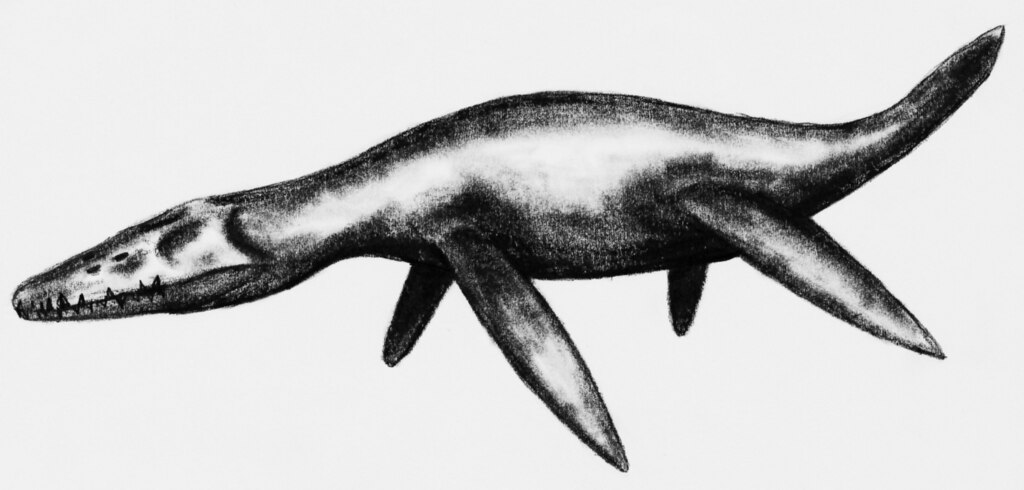
The scientific understanding of plesiosaurs has been built upon a series of remarkable fossil discoveries that continue to this day. The first scientifically described plesiosaur, found by Mary Anning in 1823 along England’s Jurassic Coast, revolutionized our understanding of prehistoric life years before Darwin’s theory of evolution. Over the decades, extraordinary specimens have continued to emerge, like the nearly complete Cryptoclidus from the Oxford Clay of England and the massive Kronosaurus queenslandicus from Australia with its 2.5-meter skull. The discovery of Elasmosaurus platyurus in Kansas in 1868 sparked the famous “head on the wrong end” controversy, when paleontologist Edward Drinker Cope initially reconstructed the 71-vertebrae neck as a tail. More recently, the 2006 discovery of “Monster of Aramberri,” a giant pliosaur from Mexico, and the extraordinarily preserved pregnant Polycotylus specimen announced in 2011 have continued to refine our understanding of these creatures. Each major discovery has added crucial details to our knowledge of plesiosaur anatomy, diversity, and biology.
Adaptations for Deep Diving

Recent research has revealed that many plesiosaurs possessed specialized adaptations for deep diving, allowing them to exploit food resources unavailable to surface-dwelling predators. Analysis of their bone microstructure shows many species had dense, compact bones rich in calcium phosphate—an adaptation called pachyostosis also seen in modern diving mammals that helps counteract buoyancy during deep dives. Their large lung capacity combined with efficient blood oxygen storage would have enabled extended underwater hunting expeditions without surfacing. Studies of their vertebral structure indicate many species could withstand the pressure changes associated with rapid ascents and descents. Particularly interesting is the evidence that some plesiosaurs may have developed specialized blood chemistry similar to modern deep-diving whales and seals, allowing them to manage nitrogen absorption during prolonged deep dives. These adaptations suggest certain plesiosaur species regularly hunted at significant depths, possibly following the daily vertical migrations of squid and deep-water fish that represent a substantial marine food resource.
Extinction and Legacy

After a remarkable 135-million-year reign, the plesiosaur dynasty came to an abrupt end during the Cretaceous-Paleogene mass extinction event approximately 66 million years ago. This catastrophic extinction, caused primarily by the impact of a massive asteroid in Mexico’s Yucatán Peninsula, eliminated approximately 75% of all species on Earth, including all non-avian dinosaurs and marine reptiles. The plesiosaurs’ extinction left a significant ecological vacancy in the world’s oceans that would eventually be filled by marine mammals like whales and dolphins, which evolved similar body shapes and ecological roles through convergent evolution despite their completely different ancestral origins. The plesiosaur legacy extends beyond their fossil record—their unique body plan has influenced cultural representations of sea monsters for centuries, including the popular but scientifically unsupported speculation that creatures like the Loch Ness Monster might represent surviving plesiosaurs. More importantly, their evolutionary adaptations continue to inspire biomechanical engineers studying underwater propulsion systems and biologists investigating the convergent evolution of marine tetrapods.
Modern Scientific Understanding
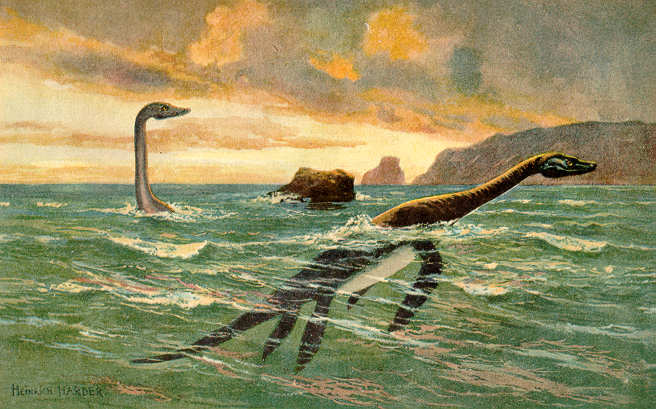
Our understanding of plesiosaurs has undergone substantial refinement in recent decades thanks to new fossil discoveries and advanced analytical techniques. Modern CT scanning technology has allowed scientists to examine the internal anatomy of plesiosaur skulls without damaging specimens, revealing details about their brain structure, sensory capabilities, and feeding mechanics. Computational fluid dynamics has transformed our understanding of their swimming abilities, with sophisticated simulations demonstrating the efficiency of their four-flipper propulsion system. Stable isotope analysis of their fossilized teeth and bones has provided insights into their diet, migration patterns, and thermoregulatory capabilities. Advances in phylogenetic analysis have clarified the evolutionary relationships between different plesiosaur groups, while microwear patterns on their teeth have revealed dietary specializations previously unknown. Perhaps most exciting is the emerging field of molecular paleontology, where researchers have begun identifying potential preserved organic molecules in exceptionally preserved plesiosaur fossils, potentially opening new windows into their physiology and biochemistry. Each year brings new discoveries that continue to reshape our vision of these extraordinary marine reptiles.
The plesiosaurs’ 135-million-year dominion over Earth’s oceans represents one of the most successful evolutionary experiments in vertebrate history. Their unique body plan, diverse ecological adaptations, and global distribution testify to their remarkable specialization for marine life. Though they disappeared along with the dinosaurs 66 million years ago, their legacy endures in the fossil record and in our collective fascination with these extraordinary creatures. As paleontological techniques continue to advance, we can expect even more revelations about how these magnificent marine reptiles lived, hunted, and ultimately conquered the prehistoric seas. The plesiosaur story reminds us that evolution’s workshop has created remarkable solutions to the challenges of aquatic life—solutions so effective that they dominated ocean ecosystems for a span of time over twice as long as mammals have been the dominant land vertebrates today.



